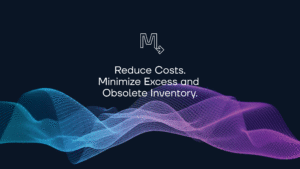How can you know your Cost to Serve is accurate?
Cost to serve is really hard to calculate.
Most companies try, but they don’t have enough good data to do it right.
Cost to Serve (CTS) is a coveted metric in the medical device industry. It enables business leaders to realize significant financial impacts within their organizations. For example, they can drive continuous improvement in operations, better manage product life cycles, inform marketing and education strategies accurately, identify the most profitable customers, and leverage meaningful data in contract negotiations. Despite all these and many more benefits, CTS analysis is used rather sparingly in med device. Why is that? Two primary reasons: First, key data for this analytic is often out of reach for many organizations. Second, determining accurate CTS requires alignment across the organization regarding allocation of uncovered expenses.
Traditionally, CTS is calculated by estimating and assigning costs to the processes that deliver a given product to the operating room, where it will ultimately be consumed. These costs include, among others: upstream sourcing, manufacturing, overhead, downstream discounts, and rebates. Medical device manufacturers typically have a robust understanding of these upstream costs. However, they often have limited visibility to field operations costs (demand behavior, operational performance, etc.). These costs appear in the last mile of the supply chain, and they vary according to procedure, team, and customer. These variables determine your customer profitability.
Effective analytics teams help leadership understand, define, track, and address all of these hidden costs. Through accurate data collection and detailed analysis of the behaviors surrounding loaned assets and operational performance, all stakeholders are able to truly understand the last-mile costs associated to each customer.
Demand Costs:
As I wrote in a previous article about demand modeling from the perspective of asset management, Demand represents all the movement of inventory to and from surgical events, independent of product consumption. Demand—in addition to consumption, can influence asset placement decisions for facilities, trunk stock locations, warehouses, and territories. From a CTS perspective, understanding where demand is generated enables appropriate allocation of inventory carrying costs for shared assets. These expenses usually include excess & obsolescence for implants, and depreciation for instruments.
Demand also drives operational expenses within field warehouses. Demand product is sourced, picked, packed, and shipped by field operators. Fulfilling demand and maintaining asset health are two of the most important functions of a field operations team member. The associated expenses can accurately drive product allocation to the appropriate sales teams and customers for CTS analysis. Some organizations even use the demand signal to track overhead costs of facilities and vehicles, and allocate those costs to specific customers.
Operational Performance:
Cost to serve analysis at the customer level can see differentiation according to operational performance. Case Life Cycle performance drives field operation efficiency. Performance around case scheduling, requesting, and movement between teams will impact an OEM’s cost to serve performance.
Case Life Cycle metrics start with measuring the traffic between sales and ops teams. Like ordering from an online retailer, overall expenses increase when order placement is delayed and lead time is compressed. Similarly, costs to source, pick, pack and deliver escalate rapidly as you shorten the window between handoff to surgery date. From a CTS perspective, a Clean Case metric which measures performance against defined schedules for these activities is invaluable. This metric can be used to assess and allocate incremental operational expenses for excessive strain on field operations.
Operational performance analyses also link the freight decisions to the individual case event. Major carriers are integrated directly into the platform and costs can be tracked for restocks and loans. Additionally, courier costs can be allocated out based on the shipping service selections made at each case event. These operational decisions are another variable considered in CTS performance.
Summary:
When calculated accurately, CTS is a highly customizable metric that provides tremendous value to OEMs. It requires robust understanding of all expenses and cost drivers including within field operations. With the right digital operations platform, it’s possible to understand the biggest cost to serve drivers in field operations. More critically, to systematically address behaviors to reduce costs. OEMs can use this analysis to inform consign/loan asset placements. They can define best practices to reduce cost drivers in freight, labor, and overhead. They are able to see their true cost to serve more completely, and then take the actions that drive financial and operational impact.
Experts at Movemedical partner with OEMs, leveraging the data captured by the Movemedical platform to better understand and continually improve their costs. The data and advanced analytics from Movemedical unlock the black box and enabling medical device companies to develop meaningful CTS analysis. If you would like to realize the benefits of understanding true cost to serve, learn how Movemedical can get you there.
Understand True Cost to Serve – Connect With Us
If an in-depth cost to serve and inventory operations optimization discussion makes sense –
contact us here: info@movemedical.com / call 877.469.3992
or watch this VIDEO (executive case study)



